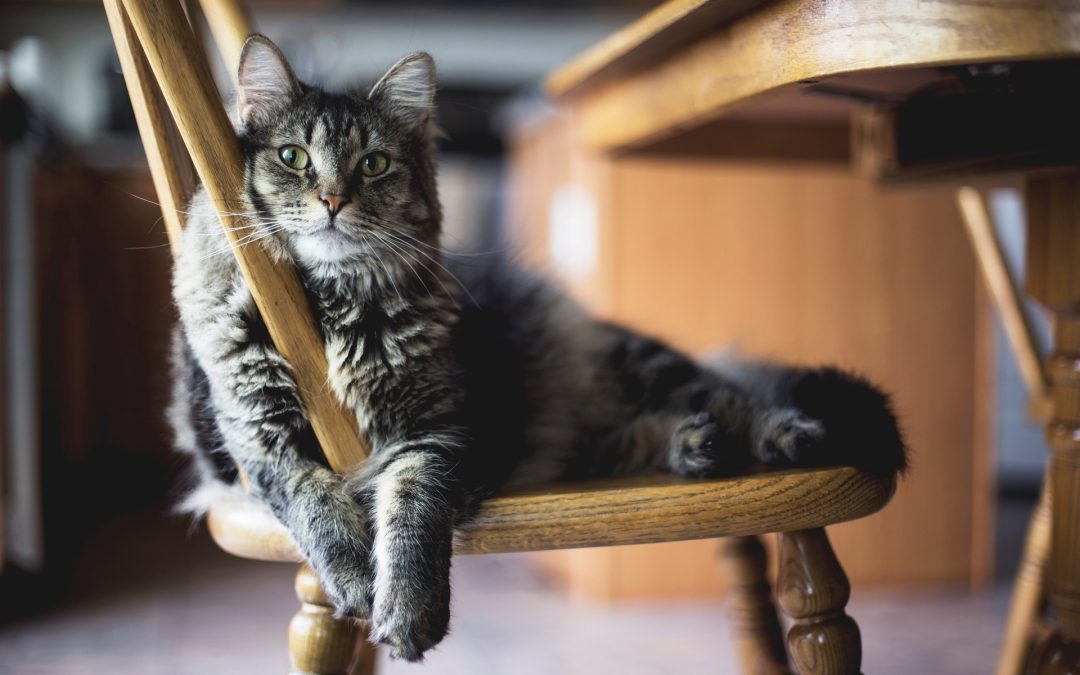Has your precious kitten started developing some bad habits? Or is your patience for your adult cat’s mischievous behaviours running thin? We know you love your fluffy, pouncing friends, but you may sometimes find that their curiosity kills your composure (we would never use the original saying).
There may be many behaviours you would rather your cat didn’t have, but here are a few of the most common and how to deal with them:
Scratching Furniture
That dreaded sound of your beautifully upholstered living room being slowly destroyed is not one you should get used to. Even if scratching is a natural feline instinct to mark their territory and care for their nails, that doesn’t mean your furniture needs to suffer. Here is how you can keep your couch and carpet intact without needing to declaw your cat:
- Anti-Scratch Tape – Cats like weirdly sticky fingers just about as much as you do. Anti-scratch tape sticks directly onto your furniture, which can be quite effective at deterring scratching. But despite being see-through, the tape may still be noticeable.
- Cat Trees – If you have space for a cat-specific piece of furniture in your home, a cat tree is a great option. The fabric used encourages scratching, and many have little cubbies and toys to keep your cat busy. You can even try building your own.
Climbing on Top of Furniture
It can be fun playing hide-and-seek with your cat and surprising to discover just how high they can climb, but there are some areas of your home that you simply prefer cat-free. For example, have you magically found your feline on top of your bookshelf, meowing because they can’t come down on their own? Or have you noticed paw prints in food you left on the counter? Here are some ways to ensure your cat stays where they are welcome:
- Cat Trees – Just like for scratching, cat trees are a great way to redirect your cat’s need to climb. The more levels to explore, the better.
- Increased Feedings – If your cat can’t help but get up close and personal with your food, perhaps they aren’t getting enough of their own. Consider looking up alternative feeding schedules.
Peeing Outside the Litter Box
We provide litter boxes specifically so we don’t have to clean up bathroom mess from the floor, so it can be fairly unpleasant when our cats don’t use them properly. There are many reasons your cat may not use their litter box. Depending on their reasoning, here are some steps to help potty train them:
- Keep the Box Clean – Your cat may choose to use the floor rather than their little box if the floor appears to be the cleaner option. Even if you’re already cleaning their box a couple times a week, your cat may be pickier than that. For the sake of your floor, consider following their preferred cleaning schedule.
- Line Plants with Tin Foil – Kittens who are not yet used to their litter box may be more drawn to natural bathroom options. Unfortunately for them, you prefer flowers to smell like flowers rather than ammonia. Placing a layer of tin foil on top of your soil should deter your cat from walking on the plant, as it’s a much less pleasant texture on their paws than dirt.
If your cat sticks to their old behaviours for a while, don’t fret! Cats can be stubborn sometimes. Just be persistent and they’ll adjust accordingly.
For information on how your cat might behave when travelling, contact us today!


Recent Comments